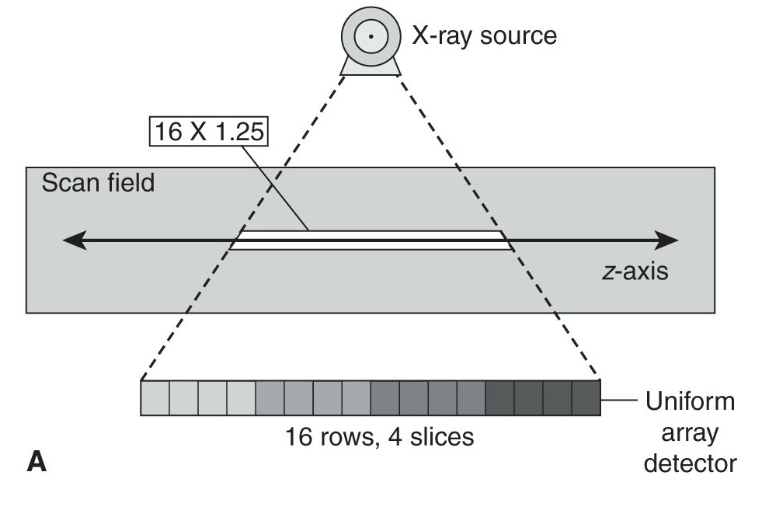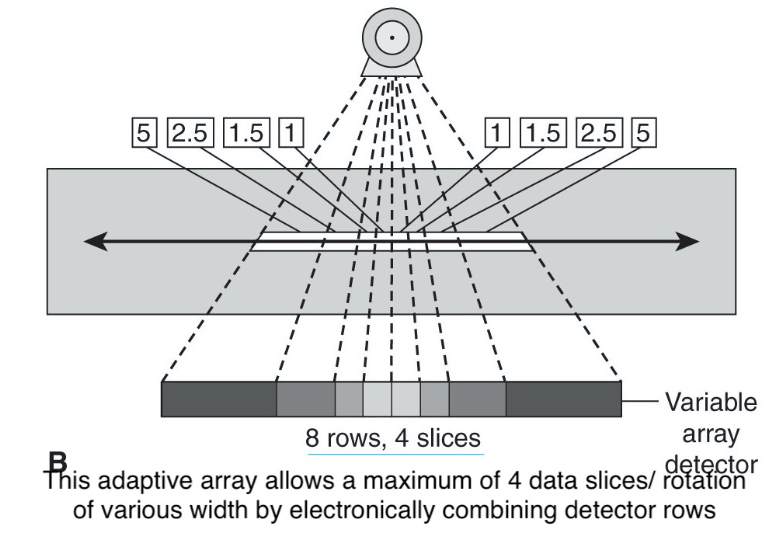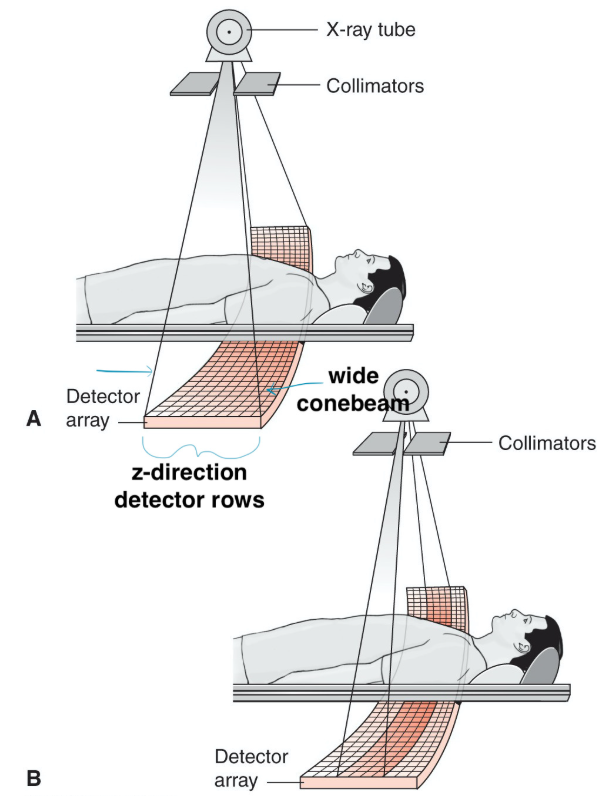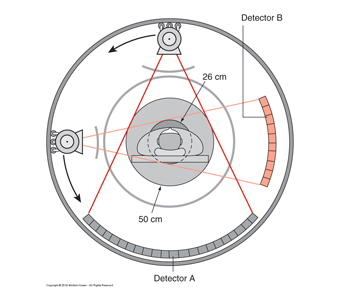W2 - Data Acquisition Methods
1/23
There's no tags or description
Looks like no tags are added yet.
Name | Mastery | Learn | Test | Matching | Spaced |
|---|
No study sessions yet.
24 Terms
Three methods of acquiring data (Types of Scans)
Localizer Scans
Sequential Scans
Helical Scans
Localizer (topograms, scouts)
Typically, more than one is taken
Moving table with a stationary tube, not cross-sectional
Sequential scans (axial, step-and-shoot)
Stationary table during scanning, then the tube activates alternately with table movement
Feature of Sequential Scans
Grouping scans: grouping more than one scan in a single breath-hold (dependent on the speed of the scanner and how long the patient can hold their breath)
Types of Data Acquisition of Sequential Scans
Continuous = one slice abuts the next
Gapped = taken when a survey of an area is needed, and imaging of every part of the region is not required
Overlapping = rare, because they raise patient dose and don’t provide additional diagnostic info
Benefit vs. Disadvantage of Sequential Scans
Benefit = very slightly improved spatial resolution due to perpendicular slices (not helical), and the patient is stationary
Disadvantage
excessive scan time (significant when using contrast media, breathing instructions)
inability to create MPR's from raw data (must be helical)
Slice misregistration (when a patient breathes differently with each data acquisition)
data gaps
Helical Scans (spiral)
The most common method
Requires continuous tube/detector activation and rotation while the table feeds through the gantry at a prescribed speed
Volume of data / Feature of Helical Scans
= the result of helical data acquisition (an unsliced loaf of bread)
Allows the user to virtually reconstruct the data in any configuration (can overlap images without the additional patient dose)
Can also decrease the partial volume effect by changing the slice center
Pitch - Helical Scans
= Table movement per rotation/ beam width (or detector collimation)
= Describes the table movement throughout a helical scan acquisition
pitch<1 = anatomy scanned multiple times (tabled slower)
pitch>1 = data gaps are created (table faster)
Pitch = 1 = table feed and beam collimations are identical
Most Common Pitch
1-1.5
Scan Planning
Patient Orientation = head or feet first
Patient Position = supine, prone, lateral decubitus
Centering = centering the pt in the x and y axes
Zeroing = centering the pt in the z axis
Types of MDCT Detector Arrays
Fixed
Adapted
Fixed MDCT
contain multiple rows of detectors of the same dimension
It is common practice to combine detector rows during acquisition to optimize data collection

Adaptive MDCT
allow for a wider variety of detector configurations
contain detector rows of varying dimensions (in the z-axis)

MDCT Advantage
= ability to acquire multiple/longer/faster discrete slices of data with each gantry rotation
however, a wider beam decreases IQ; hence, maximum collimation is limited in areas that require high IQ
only when speed is prioritized, the full detector array will be activated

Isotropic Data Acquisition
= acquiring helical data in tiny isotropic volumes or voxels
Allows data to be reconstructed in any plane with equivalent image quality, because the x, y and z dimensions are all equal
Accompanied by the thinnest detector rows
Advanced Data Acquisition Methods
Dual Source CT
Dual Energy CT
Dynamic CT
Dual Source/ Focal Spot CT
= incorporates two sets of tube-detector arrays within the gantry

Pro and Con of Dual Source CT
Pro = increased scan speeds/ temporal resolution, high-powered scanning for bariatrics
Con = practically, the second detector array is restricted by the size available in the gantry. Therefore, one detector array covers the entire scan field of view, whereas the second detector is limited to a smaller, central field of view
Dual Energy CT (Spectral Imaging)
= done by operating the tube(s) at two different energies
Function of the Dual Energy CT
allows for tissue differentiation through software analysis
useful when the identification of a particular substance in the body benefits diagnosis
Dynamic CT
= continuous scanning of the same region by continuously scanning with the table stationary
Function/Benefit of Dynamic CT
Common for blood flow evaluation, aka perfusion study
Brain perfusion scans which are performed to evaluate the extent of brain tissue involvement during/following ischemic stroke events.
Detector Binning
Grouping detector rows together in various combinations to acquire the desired number of slices at the desired slice thickness